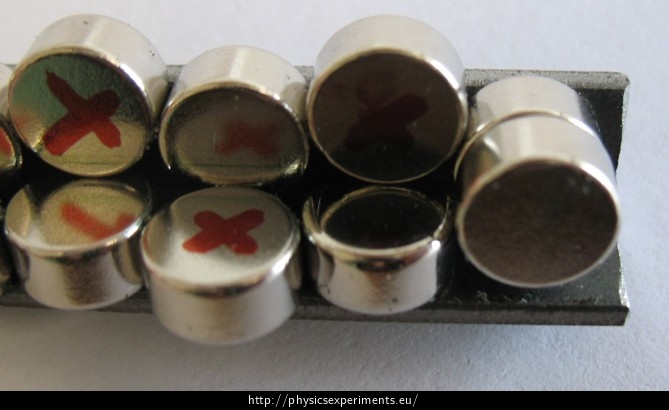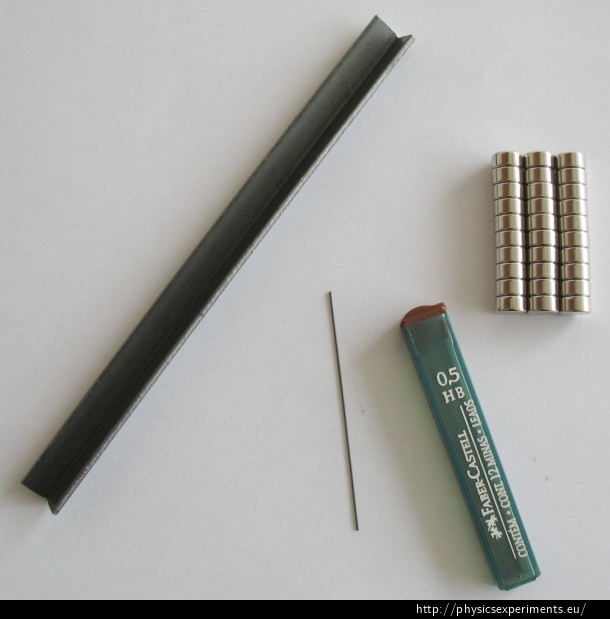Levitating Pencil Lead – Demonstration of Diamagnetism
Experiment number : 2121
Goal of experiment
The experiment demonstrates a diamagnetic levitation in an untraditional manner: a pencil lead levitates in a “trough” of magnets.
Theory
We can divide matter in three basic types according to its magnetic properties: diamagnetic, paramagnetic and ferromagnetic. Magnetic properties depend on the electron shell structure of the atom and the arrangement of atoms in the structure of the matter. The properties and behaviour of individual types of magnetic materials are described in detail in the experiment Demonstration of Properties of Diamagnetic and Paramagnetic Substances.
Diamagnetic substances weaken the magnetic field slightly, which means that diamagnetic matter is slightly repelled from the magnet. In a suitable arrangement, the repulsive diamagnetic forces can compensate for the gravitational force float in the air above the magnets.
A suitable material for this diamagnetic levitation is graphite (usually called pyrolytic graphite), which is strongly diamagnetic as well as light. The arrangement described in this experiment uses commonly available refills of mechanical pencils.
Tools
- L-shaped iron profile with dimensions 1 × 1 cm and a length of at least 15 cm
- neodymium magnets with a diameter of 8 mm and thickness of about 4 mm (at least 30 pieces)
- mechanical pencil graphite leads
Note: Some graphite leads contain traces of iron. Because the repulsive diamagnetic force is quite small compared to the force with which iron is attracted to magnets, it is necessary to choose leads that do not contain trace amounts of iron. According to our experience, most of Faber-Castell leads are suitable for the experiment. Leads provided by other manufacturers did not work.
Making a track for lead
Put the magnets in the iron bars so that their poles alternate and at the same time one magnet is inserted and the opposite magnet lays on the inserted one (see Figure 2, north poles are marked with a cross).
At the end of the track you can place two magnets on top of each other so that the lead does not run out (see Figure 3).

Sample result
Technical notes
- When moving, the lead “skips” the gap between the magnets, so the gaps must not be too large. In practice, magnets with a diameter of up to 8 mm have proven useful.
- A suitable iron profile is for example an L-profile rod from the Czech Merkur toy kit.
Learn more
More information can be found in the article: Koudelkova V.: How to simply demonstrate diamagnetic levitation with pencil lead; Phys. Ed. 51(1), (2016)










